Quality Evaluation of Public Spaces in Traditional Villages: A Study Using Deep Learning and Panoramic Images
Abstract
:1. Introduction
2. Materials and Methods
2.1. Study Area
2.2. Selection of Public Spaces
2.3. Selection of Evaluation Indicators for the Quality of Public Spaces in Traditional Villages
2.4. Quantification of Evaluation Indicators for the Quality of Public Spaces in Traditional Villages
2.4.1. Panoramic Image Data Collection
2.4.2. Deep Learning-Based Automatic Identification and Extraction of Elemental Features
2.4.3. MATLAB-Based Visual Entropy and Color Richness Calculation
2.4.4. Quantification of Other Indicators
2.5. AHP-CRITIC Method for Determining the Combined Weights of the Evaluation Indicators
2.5.1. AHP Method for Determining Subjective Weights
2.5.2. CRITIC Method for Determining Objective Weights
2.5.3. Combined Weights of the Evaluation Indicators
2.6. TOPSIS Method to Determine the Quality of Public Spaces in Traditional Villages
3. Results
3.1. Performance of the Mask2former Image Segmentation Model
3.2. Correlation of Evaluation Indicators
3.3. Weights of Evaluation Indicators
3.4. Evaluation Results of the Quality of Public Spaces in Traditional Villages
3.4.1. Comparative Analysis of the Quality of Public Spaces in Traditional Villages
3.4.2. Spatial Distribution of the Quality Level of Public Spaces in Traditional Villages
3.4.3. Characterization of Public Spaces in Traditional Villages
3.4.4. Validation of the Evaluation Results
4. Discussion
4.1. Theoretical Contribution
4.2. Practical Implications
4.3. Limitations and Suggestions for Future Research
5. Conclusions
Author Contributions
Funding
Data Availability Statement
Acknowledgments
Conflicts of Interest
References
- Sardaro, R.; La Sala, P.; De Pascale, G.; Faccilongo, N. The conservation of cultural heritage in rural areas: Stakeholder preferences regarding historical rural buildings in Apulia, southern Italy. Land Use Policy 2021, 109, 105662. [Google Scholar] [CrossRef]
- Zhao, X.; Ju, S.; Wang, W.; Su, H.; Wang, L. Intergenerational and gender differences in satisfaction of farmers with rural public space: Insights from traditional village in Northwest China. Appl. Geogr. 2022, 146, 102770. [Google Scholar] [CrossRef]
- Guo, Z.; Sun, L. The planning, development and management of tourism: The case of Dangjia, an ancient village in China. Tour. Manag. 2016, 56, 52–62. [Google Scholar] [CrossRef]
- Katapidi, I. Heritage policy meets community praxis: Widening conservation approaches in the traditional villages of central Greece. J. Rural Stud. 2021, 81, 47–58. [Google Scholar] [CrossRef]
- Wang, D.; Zhu, Y.; Zhao, M.; Lv, Q. Multi-dimensional hollowing characteristics of traditional villages and its influence mechanism based on the micro-scale: A case study of Dongcun Village in Suzhou, China. Land Use Policy 2021, 101, 105146. [Google Scholar] [CrossRef]
- Liu, Y.; Li, Y. Revitalize the world’s countryside. Nature 2017, 548, 275–277. [Google Scholar] [CrossRef]
- Qi, W.; Deng, Y.; Fu, B. Rural attraction: The spatial pattern and driving factors of China’’s rural in-migration. J. Rural Stud. 2022, 93, 461–470. [Google Scholar] [CrossRef]
- Chen, X.; Xie, W.; Li, H. The spatial evolution process, characteristics and driving factors of traditional villages from the perspective of the cultural ecosystem: A case study of Chengkan Village. Habitat Int. 2020, 104, 102250. [Google Scholar] [CrossRef]
- Gao, J.; Wu, B. Revitalizing traditional villages through rural tourism: A case study of Yuanjia Village, Shaanxi Province, China. Tour. Manag. 2017, 63, 223–233. [Google Scholar] [CrossRef]
- Lekakis, S.; Dragouni, M. Heritage in the making: Rural heritage and its mnemeiosis at Naxos island, Greece. J. Rural Stud. 2020, 77, 84–92. [Google Scholar] [CrossRef]
- Elshof, H.; Haartsen, T.; Van Wissen, L.J.; Mulder, C.H. The influence of village attractiveness on flows of movers in a declining rural region. J. Rural Stud. 2017, 56, 39–52. [Google Scholar] [CrossRef]
- Fu, J.; Zhou, J.; Deng, Y. Heritage values of ancient vernacular residences in traditional villages in Western Hunan, China: Spatial patterns and influencing factors. Build. Environ. 2021, 188, 107473. [Google Scholar] [CrossRef]
- Sharifi, A.; Dawodu, A.; Cheshmehzangi, A. Limitations in assessment methodologies of neighborhood sustainability assessment tools: A literature review. Sustain. Cities Soc. J. SCS 2021, 67, 102739. [Google Scholar] [CrossRef]
- Wartmann, F.M.; Frick, J.; Kienast, F.; Hunziker, M. Factors influencing visual landscape quality perceived by the public. Results from a national survey. Landsc. Urban Plan. 2021, 208, 104024. [Google Scholar] [CrossRef]
- Šťastná, M.; Vaishar, A. Values of rural landscape: The case study Chlum u Třeboně (Bohemia). Land Use Policy 2020, 97, 104699. [Google Scholar] [CrossRef]
- Barrientos, F.; Martin, J.; De Luca, C.; Tondelli, S.; Gómez-García-Bermejo, J.; Casanova, E.Z. Computational methods and rural cultural & natural heritage: A review. J. Cult. Herit. 2021, 49, 250–259. [Google Scholar] [CrossRef]
- Chen, L.; Zhong, Q.; Li, Z. Analysis of spatial characteristics and influence mechanism of human settlement suitability in traditional villages based on multi-scale geographically weighted regression model: A case study of Hunan province. Ecol. Indic. 2023, 154, 110828. [Google Scholar] [CrossRef]
- Chen, W.; Yang, L.; Wu, J.; Wu, J.; Wang, G.; Bian, J.; Zeng, J.; Liu, Z. Spatio-temporal characteristics and influencing factors of traditional villages in the Yangtze River Basin: A Geodetector model. Herit. Sci. 2023, 11, 111. [Google Scholar] [CrossRef]
- Ma, H.; Tong, Y. Spatial differentiation of traditional villages using ArcGIS and GeoDa: A case study of Southwest China. Ecol. Inform. 2022, 68, 101416. [Google Scholar] [CrossRef]
- Xiang, H.; Xie, M.; Fang, Y. Study on the architecture space-social network characteristics based on social network analysis: A case study of Anshun Tunpu settlement. Ain Shams Eng. J. 2024, 15, 102333. [Google Scholar] [CrossRef]
- Yang, X.; Pu, F. Clustered and dispersed: Exploring the morphological evolution of traditional villages based on cellular automaton. Herit. Sci. 2022, 10, 133. [Google Scholar] [CrossRef]
- Wang, X.; Zhu, Q. Influencing factors of traditional village protection and development from the perspective of resilience theory. Land 2022, 11, 2314. [Google Scholar] [CrossRef]
- Chen, G.; Sun, X.; Yu, W.; Wang, H. Analysis Model of the Relationship between Public Spatial Forms in Traditional Villages and Scenic Beauty Preference Based on LiDAR Point Cloud Data. Land 2022, 11, 1133. [Google Scholar] [CrossRef]
- Chen, G.; Yan, J.; Wang, C.; Chen, S. Expanding the Associations between Landscape Characteristics and Aesthetic Sensory Perception for Traditional Village Public Space. Forests 2024, 15, 97. [Google Scholar] [CrossRef]
- Zhou, W.; Chen, L.-Y.; Chou, R.-J. Important factors affecting rural tourists’’ aesthetic experience: A case study of zoumatang village in Ningbo. Sustainability 2021, 13, 7594. [Google Scholar] [CrossRef]
- Lyu, Y.; Zhang, L.; Liu, X.; Ma, X. Microclimate-Adaptive Morphological Parametric Design of Streets and Alleys in Traditional Villages. Buildings 2024, 14, 152. [Google Scholar] [CrossRef]
- Xiong, Y.; Zhang, J.; Yan, Y.; Sun, S.; Xu, X.; Higueras, E. Effect of the spatial form of Jiangnan traditional villages on microclimate and human comfort. Sustain. Cities Soc. 2022, 87, 104136. [Google Scholar] [CrossRef]
- Zhang, L.; Miao, Y. An Experimental Eye-Movement Study on the Spatial Attraction Characteristics and Perception of Different Landscape Types in Ethnic Villages. J. Urban Plan. Dev. 2023, 149, 04023039. [Google Scholar] [CrossRef]
- Xie, C. Characteristics of public space behavior and demand of rural residents in foshan. In Proceedings of the E3S Web of Conferences, Hyderabad, India, 24–26 September 2021; p. 02011. [Google Scholar] [CrossRef]
- Qin, X.; Yang, D.; Wangari, V.W. Quantitative characterization and evaluation of highway greening landscape spatial quality based on deep learning. Environ. Impact Assess. Rev. 2024, 107, 107559. [Google Scholar] [CrossRef]
- Wang, R.; Zhao, J.; Liu, Z. Consensus in visual preferences: The effects of aesthetic quality and landscape types. Urban For. Urban Green. 2016, 20, 210–217. [Google Scholar] [CrossRef]
- Tang, J.; Long, Y. Measuring visual quality of street space and its temporal variation: Methodology and its application in the Hutong area in Beijing. Landsc. Urban Plan. 2019, 191, 103436. [Google Scholar] [CrossRef]
- de Val, G.d.l.F.; Atauri, J.A.; de Lucio, J.V. Relationship between landscape visual attributes and spatial pattern indices: A test study in Mediterranean-climate landscapes. Landsc. Urban Plan. 2006, 77, 393–407. [Google Scholar] [CrossRef]
- Zhang, M.; Li, Z.; Wu, X. Semantic segmentation method accelerated quantitative analysis of the spatial characteristics of traditional villages. Int. Arch. Photogramm. Remote Sens. Spat. Inf. Sci. 2021, 46, 933–939. [Google Scholar] [CrossRef]
- Kido, D.; Fukuda, T.; Yabuki, N. Assessing future landscapes using enhanced mixed reality with semantic segmentation by deep learning. Adv. Eng. Inform. 2021, 48, 101281. [Google Scholar] [CrossRef]
- Weichenthal, S.; Hatzopoulou, M.; Brauer, M. A picture tells a thousand… exposures: Opportunities and challenges of deep learning image analyses in exposure science and environmental epidemiology. Environ. Int. 2019, 122, 3–10. [Google Scholar] [CrossRef]
- Li, X.; Li, L.; Wang, X.; Lin, Q.; Wu, D.; Dong, Y.; Han, S. Visual quality evaluation model of an urban river landscape based on random forest. Ecol. Indic. 2021, 133, 108381. [Google Scholar] [CrossRef]
- Li, X.; Wang, X.; Jiang, X.; Han, J.; Wang, Z.; Wu, D.; Lin, Q.; Li, L.; Zhang, S.; Dong, Y. Prediction of riverside greenway landscape aesthetic quality of urban canalized rivers using environmental modeling. J. Clean. Prod. 2022, 367, 133066. [Google Scholar] [CrossRef]
- Zhang, X.; Xiong, X.; Chi, M.; Yang, S.; Liu, L. Research on visual quality assessment and landscape elements influence mechanism of rural greenways. Ecol. Indic. 2024, 160, 111844. [Google Scholar] [CrossRef]
- Li, X.; Zhang, X.; Jia, T. Humanization of nature: Testing the influences of urban park characteristics and psychological factors on collegers’’ perceived restoration. Urban For. Urban Green. 2023, 79, 127806. [Google Scholar] [CrossRef]
- Zhang, X.; Lin, E.S.; Tan, P.Y.; Qi, J.; Ho, R.; Sia, A.; Waykool, R.; Song, X.P.; Olszewska-Guizzo, A.; Meng, L. Beyond just green: Explaining and predicting restorative potential of urban landscapes using panorama-based metrics. Landsc. Urban Plan. 2024, 247, 105044. [Google Scholar] [CrossRef]
- Ki, D.; Lee, S. Analyzing the effects of Green View Index of neighborhood streets on walking time using Google Street View and deep learning. Landsc. Urban Plan. 2021, 205, 103920. [Google Scholar] [CrossRef]
- Wen, D.; Liu, M.; Yu, Z. Quantifying ecological landscape quality of urban street by open street view images: A case study of xiamen island, china. Remote Sens. 2022, 14, 3360. [Google Scholar] [CrossRef]
- Chen, B.; Feng, Q.; Niu, B.; Yan, F.; Gao, B.; Yang, J.; Gong, J.; Liu, J. Multi-modal fusion of satellite and street-view images for urban village classification based on a dual-branch deep neural network. Int. J. Appl. Earth Obs. Geoinf. 2022, 109, 102794. [Google Scholar] [CrossRef]
- Meng, C.; Song, Y.; Ji, J.; Jia, Z.; Zhou, Z.; Gao, P.; Liu, S. Automatic classification of rural building characteristics using deep learning methods on oblique photography. Build. Simul. 2022, 15, 1161–1174. [Google Scholar] [CrossRef]
- Wang, W.; Shi, Y.; Zhang, J.; Hu, L.; Li, S.; He, D.; Liu, F. Traditional village building extraction based on improved Mask R-CNN: A case study of Beijing, China. Remote Sens. 2023, 15, 2616. [Google Scholar] [CrossRef]
- Zu, X.; Gao, C.; Wang, Y. Interpreting regional characteristics of Tibetan-Qiang houses in Northwestern Sichuan by Deep Learning and Image Landscape. Int. J. Appl. Earth Obs. Geoinf. 2024, 129, 103865. [Google Scholar] [CrossRef]
- Fan, L.; Liu, Y.; Zhang, D. Spatial pattern of tourism development in traditional Chinese villages and its influencing factors. Econ. Geogr. 2023, 43, 203–214. [Google Scholar] [CrossRef]
- Han, H.; Guo, L.; Zhang, J.; Zhang, K.; Cui, N. Spatiotemporal analysis of the coordination of economic development, resource utilization, and environmental quality in the Beijing-Tianjin-Hebei urban agglomeration. Ecol. Indic. 2021, 127, 107724. [Google Scholar] [CrossRef]
- He, Y.; Wang, X.; He, Y.; Duan, Z.; Zeng, G. The revival and reconstruction of traditional rural public cultural space under the perspective of rural revitalization: A survey based on the ancestral halls in villages in Lianhua County, Jiangxi Province. J. Agric. For. Econ. Manag. 2019, 18, 822–828. [Google Scholar] [CrossRef]
- Wang, Y.; Meng, X.; Zou, Q. Graphical language and application of public open space in traditional villages. Chin. Gard. 2016, 32, 44–49. [Google Scholar]
- Arriaza, M.; Cañas-Ortega, J.F.; Cañas-Madueño, J.A.; Ruiz-Aviles, P. Assessing the visual quality of rural landscapes. Landsc. Urban Plan. 2004, 69, 115–125. [Google Scholar] [CrossRef]
- Carneiro, M.J.; Lima, J.; Silva, A. The relevance of landscape in the rural tourism experience: Identifying important elements of the rural landscape. J. Sustain. Tour. 2015, 23, 1217–1235. [Google Scholar] [CrossRef]
- Xie, H.; Zhu, Z.; He, Y.; Zeng, X.; Wen, Y. Integrated framework of rural landscape research: Based on the global perspective. Landsc. Ecol. 2022, 37, 1161–1184. [Google Scholar] [CrossRef]
- Evaluation and Recognition Indicator System for Traditional Villages (Trial). Available online: https://www.mohurd.gov.cn/gongkai/zhengce/zhengcefilelib/201208/20120831_211267.html (accessed on 1 June 2024).
- Aquilino, L.; Harris, J.; Wise, N. A sense of rurality: Events, placemaking and community participation in a small Welsh town. J. Rural Stud. 2021, 83, 138–145. [Google Scholar] [CrossRef]
- Bi, H.; Tang, H.; Guan, M.; Chen, H. The influencing mechanism and construction strategy of rural public space attachment: A case study of Qiu Village in Yingde. Chin. Gard. 2022, 38, 58–62. [Google Scholar] [CrossRef]
- Shen, L.; Zhang, Y.; Yao, M.; Lan, S. Combination weighting integrated with TOPSIS for landscape performance evaluation: A case study of microlandscape from rural areas in southeast China. Sustainability 2022, 14, 9794. [Google Scholar] [CrossRef]
- Sundblad, D.R.; Sapp, S.G. The persistence of neighboring as a determinant of community attachment: A community field perspective. Rural Sociol. 2011, 76, 511–534. [Google Scholar] [CrossRef]
- Zheng, J.; He, J.; Tang, H. The vitality of public space and the effects of environmental factors in Chinese suburban rural communities based on tourists and residents. Int. J. Environ. Res. Public Health 2022, 20, 263. [Google Scholar] [CrossRef]
- Chen, Z.; Yang, H.; Lin, Y.; Xie, J.; Xie, Y.; Ding, Z. Exploring the association between the built environment and positive sentiments of tourists in traditional villages in Fuzhou, China. Ecol. Inform. 2024, 80, 102465. [Google Scholar] [CrossRef]
- Lin, Y.; Yang, H.; Chen, Z.; Ding, Z. Analysis of landscape quality of traditional village cultural tourism space from the perspective of trail perception. J. Huaqiao Univ. 2024, 45, 370–382. [Google Scholar]
- Zhong, Y.; Zhang, M.; Xia, Y.; Hao, R.; Tan, L. Public Aesthetic and Recreational Preferences for Historical Irrigation Canals in Rural Areas: A Case Study in Li Canal-Gaoyou Irrigation District. Buildings 2024, 14, 1955. [Google Scholar] [CrossRef]
- Cheng, B.; Misra, I.; Schwing, A.G.; Kirillov, A.; Girdhar, R. Masked-attention mask transformer for universal image segmentation. In Proceedings of the IEEE/CVF Conference on Computer Vision and Pattern Recognition, New Orleans, LA, USA, 18–24 June 2022; pp. 1290–1299. [Google Scholar]
- Guo, S.; Yang, Q.; Xiang, S.; Wang, S.; Wang, X. Mask2Former with Improved Query for Semantic Segmentation in Remote-Sensing Images. Mathematics 2024, 12, 765. [Google Scholar] [CrossRef]
- Cao, Y.; Zhao, Z.; Huang, Y.; Lin, X.; Luo, S.; Xiang, B.; Yang, H. Case instance segmentation of small farmland based on Mask R-CNN of feature pyramid network with double attention mechanism in high resolution satellite images. Comput. Electron. Agric. 2023, 212, 108073. [Google Scholar] [CrossRef]
- Orhan, S.; Bastanlar, Y. Semantic segmentation of outdoor panoramic images. Signal Image Video Process. 2022, 16, 643–650. [Google Scholar] [CrossRef]
- Zheng, H.; Wang, M.; Wang, Z.; Huang, X. FireDM: A weakly-supervised approach for massive generation of multi-scale and multi-scene fire segmentation datasets. Knowl. Based Syst. 2024, 290, 111547. [Google Scholar] [CrossRef]
- Stamps, A.E., III. Entropy and visual diversity in the environment. J. Archit. Plan. Res. 2004, 21, 239–256. [Google Scholar]
- Hasler, D.; Suesstrunk, S.E. Measuring colorfulness in natural images. In Proceedings of the Human Vision and Electronic Imaging VIII, Santa Clara, CA, USA, 21–24 January 2003; pp. 87–95. [Google Scholar] [CrossRef]
- Zhao, P.; Ali, Z.M.; Ahmad, Y. Developing indicators for sustainable urban regeneration in historic urban areas: Delphi method and Analytic Hierarchy Process (AHP). Sustain. Cities Soc. 2023, 99, 104990. [Google Scholar] [CrossRef]
- Diakoulaki, D.; Mavrotas, G.; Papayannakis, L. Determining objective weights in multiple criteria problems: The critic method. Comput. Oper. Res. 1995, 22, 763–770. [Google Scholar] [CrossRef]
- Yang, T.; Zhang, Q.; Wan, X.; Li, X.; Wang, Y.; Wang, W. Comprehensive ecological risk assessment for semi-arid basin based on conceptual model of risk response and improved TOPSIS model-a case study of Wei River Basin, China. Sci. Total Environ. 2020, 719, 137502. [Google Scholar] [CrossRef]
- Dong, J.; Guo, R.; Guo, F.; Cai, J. Potential evaluation and implementation strategy for pocket park construction in high-density urban areas: A case study in dalian, China. Front. Archit. Res. 2024, 13, 319–334. [Google Scholar] [CrossRef]
- Li, Z.; Wang, L.; Gao, Y.; Li, J. Research on landscape emotion quantification based on scene EEG GRA-TOPSIS model: A case study of Xiangyang Weidong Factory. Landsc. Archit. 2022, 29, 33–40. [Google Scholar]
- Wu, Z.; Zhu, D.; Xiong, K.; Wang, X. Dynamics of landscape ecological quality based on benefit evaluation coupled with the rocky desertification control in South China Karst. Ecological Indicators 2022, 138, 108870. [Google Scholar] [CrossRef]
- Ren, X. Consensus in factors affecting landscape preference: A case study based on a cross-cultural comparison. J. Environ. Manag. 2019, 252, 109622. [Google Scholar] [CrossRef] [PubMed]
- Reyers, B.; Selomane, O. Social-ecological systems approaches: Revealing and navigating the complex trade-offs of sustainable development. In Ecosystem Services and Poverty Alleviation (Open Access); Routledge: London, UK, 2018; pp. 39–54. [Google Scholar]
- Fang, Q.; Zhu, Y. Research on optimization of public space in traditional Huizhou villages from the perspective of behavioral needs. Forecast 2021, 40, 90–96. [Google Scholar]
- Yu, J.; Egger, R. Color and engagement in touristic Instagram pictures: A machine learning approach. Ann. Tour. Res. 2021, 89, 103204. [Google Scholar] [CrossRef]
- Tomej, K.; Liburd, J.J. Sustainable accessibility in rural destinations: A public transport network approach. J. Sustain. Tour. 2020, 28, 222–239. [Google Scholar] [CrossRef]
Disclaimer/Publisher’s Note: The statements, opinions and data contained in all publications are solely those of the individual author (s) and contributor (s) and not of MDPI and/or the editor (s). MDPI and/or the editor (s) disclaim responsibility for any injury to people or property resulting from any ideas, methods, instructions or products referred to in the content. |
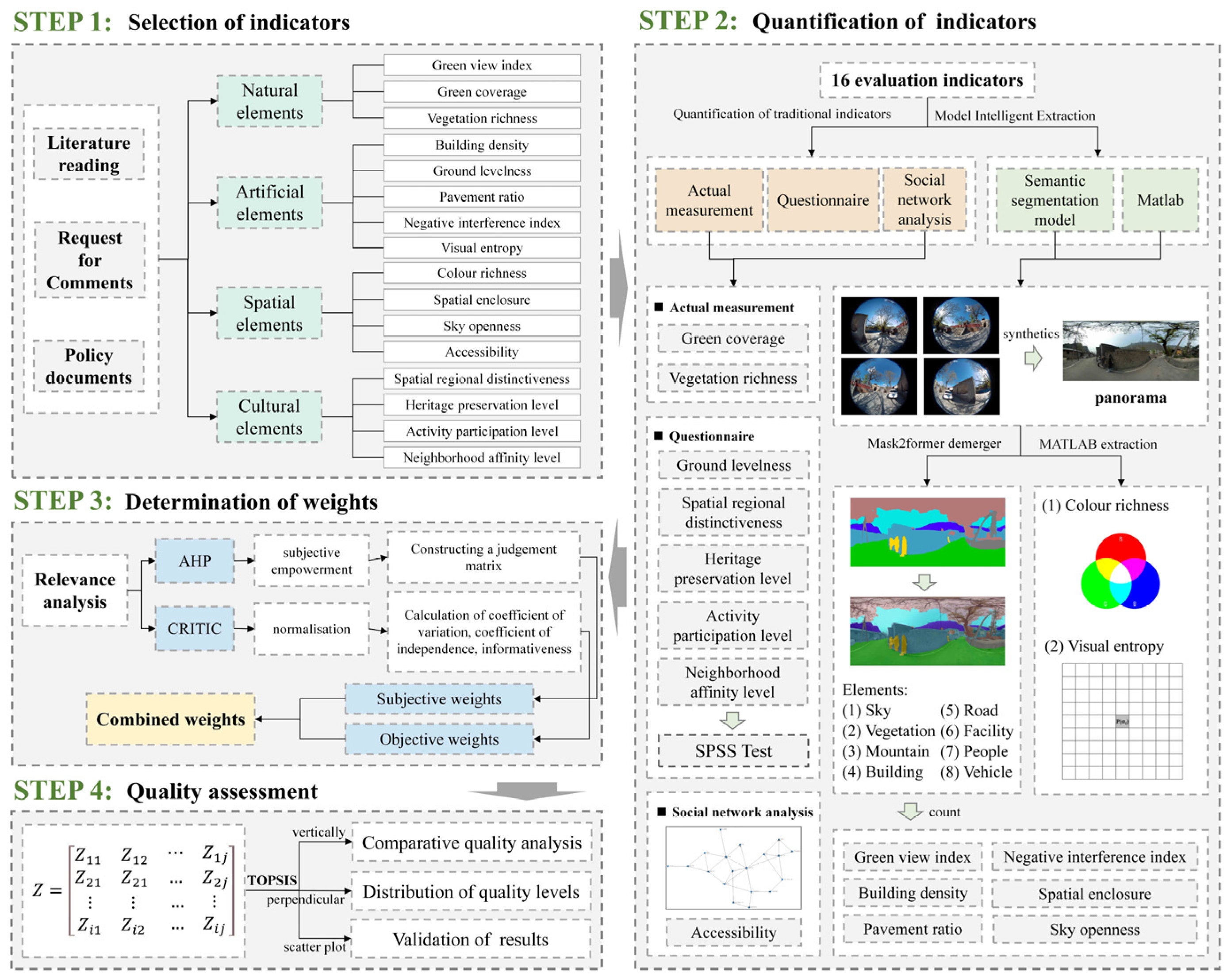
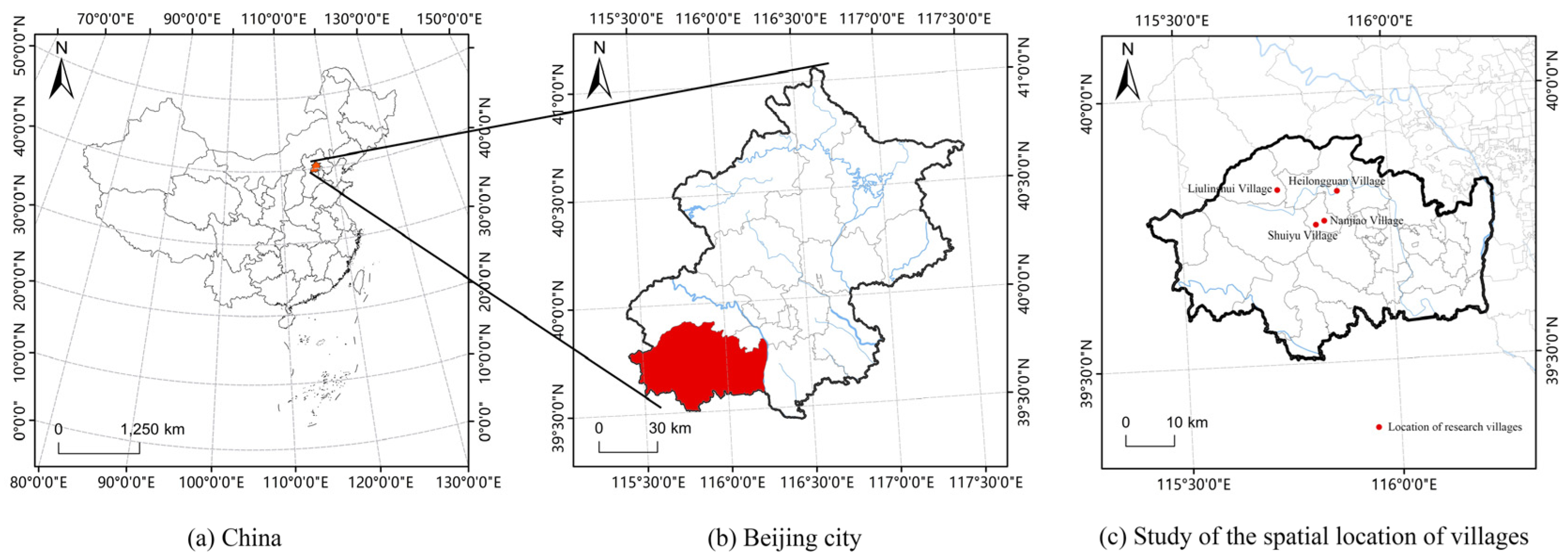
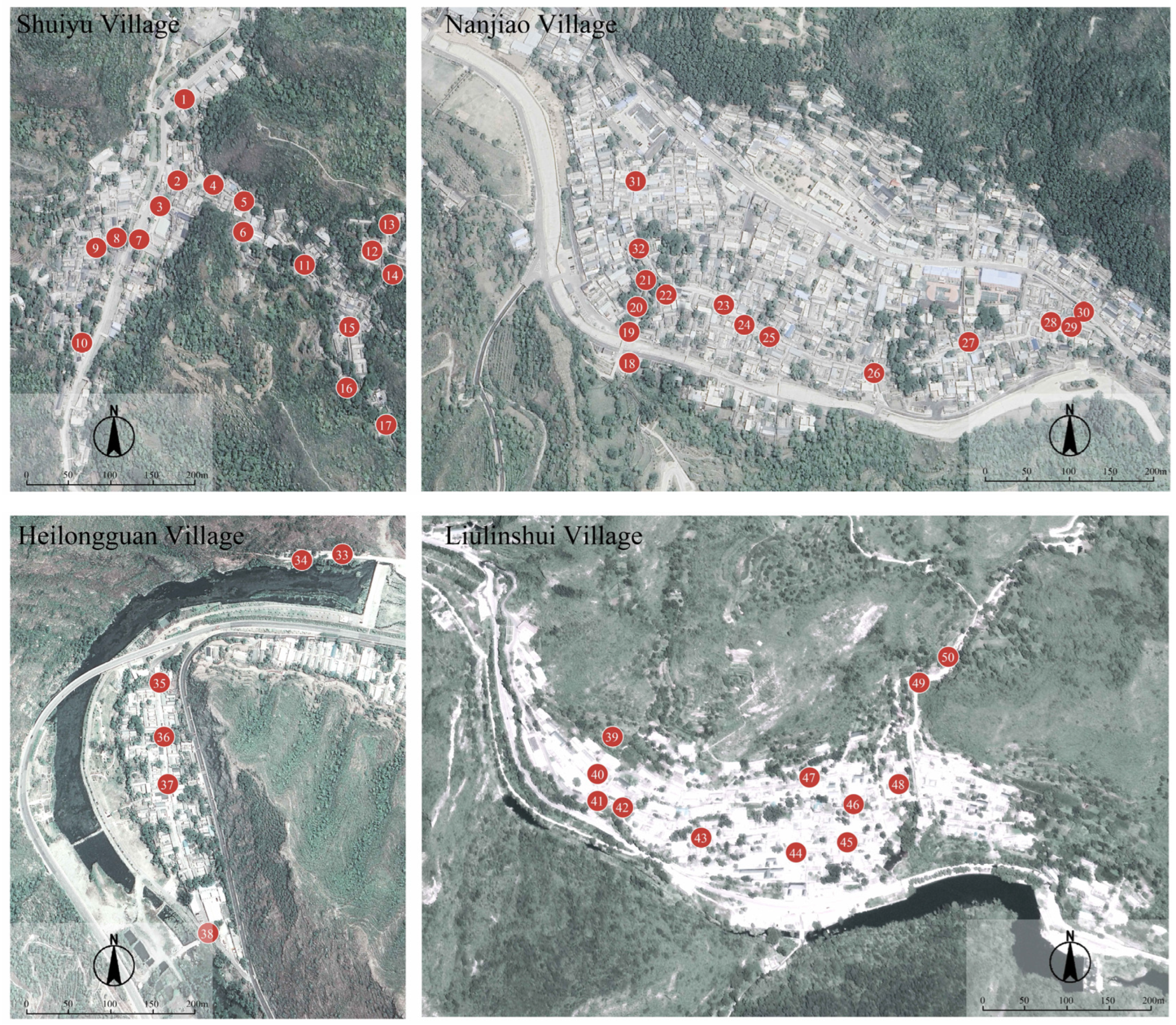


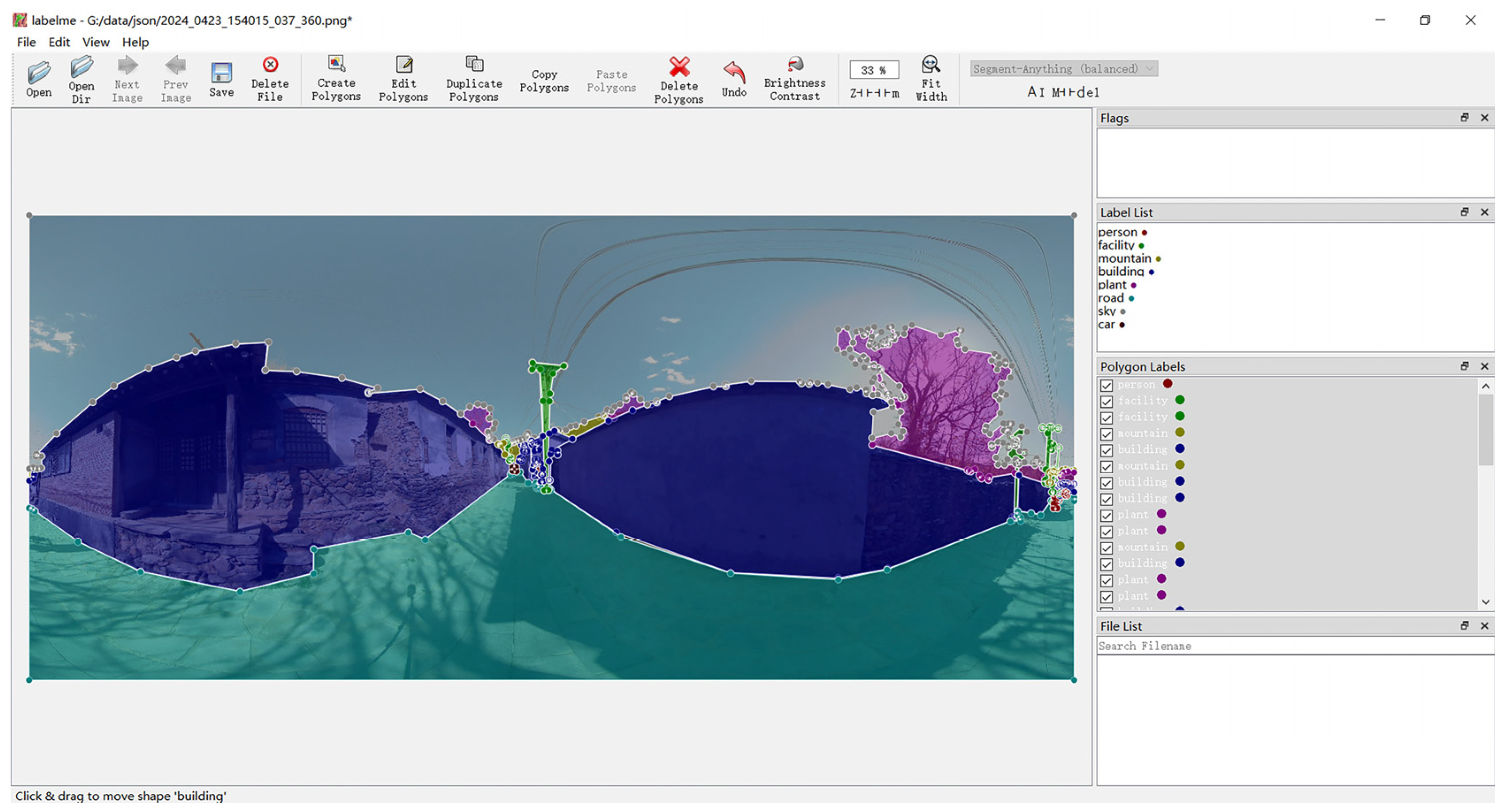
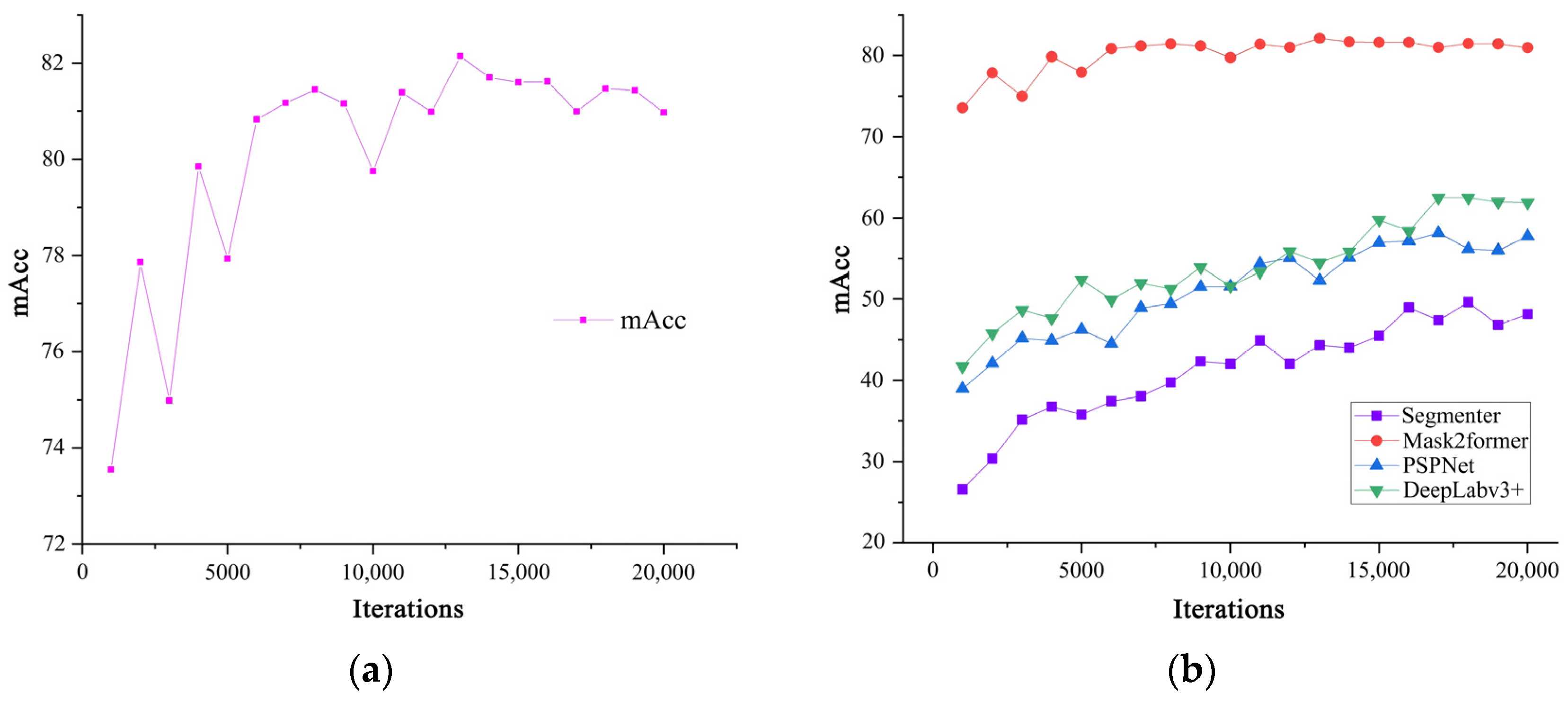
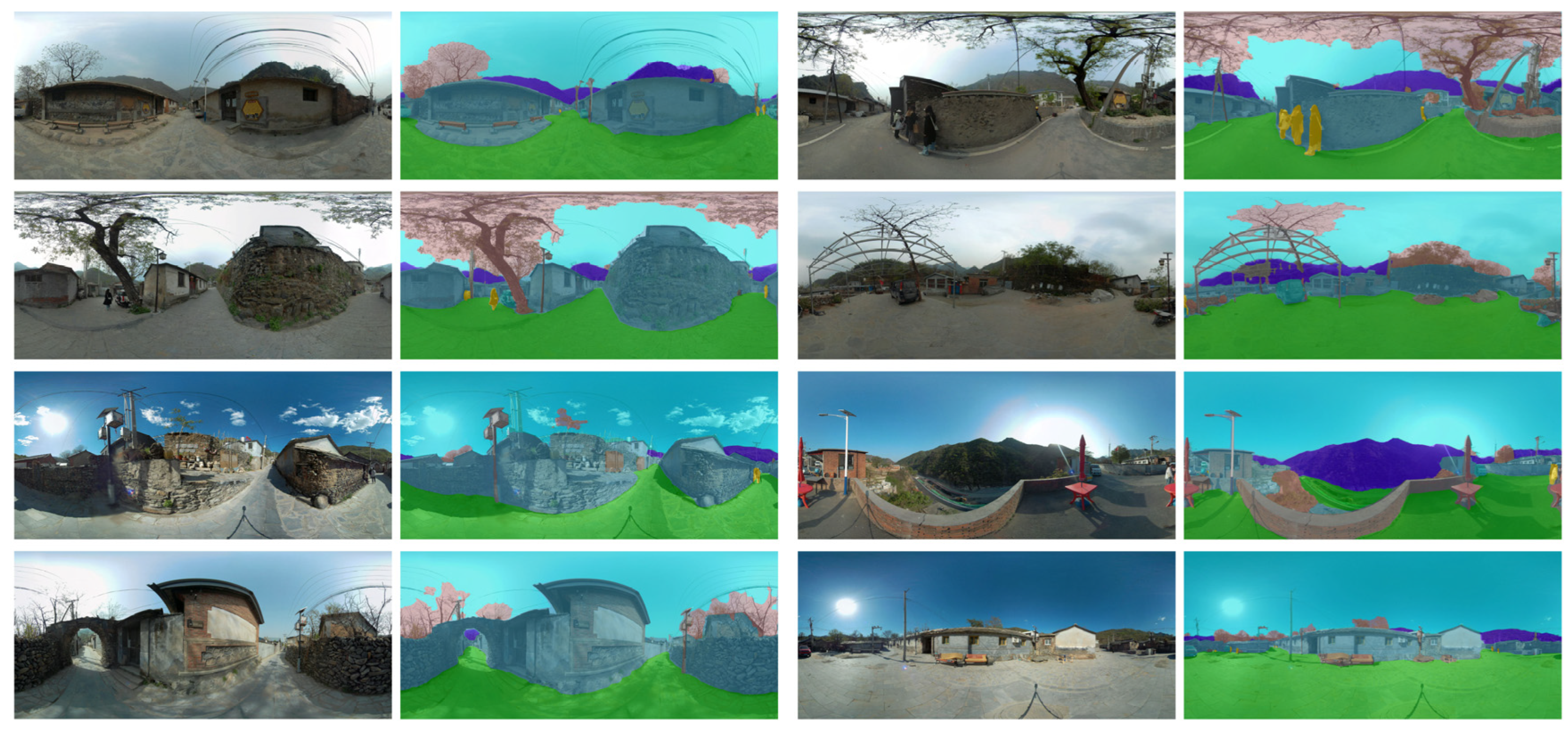
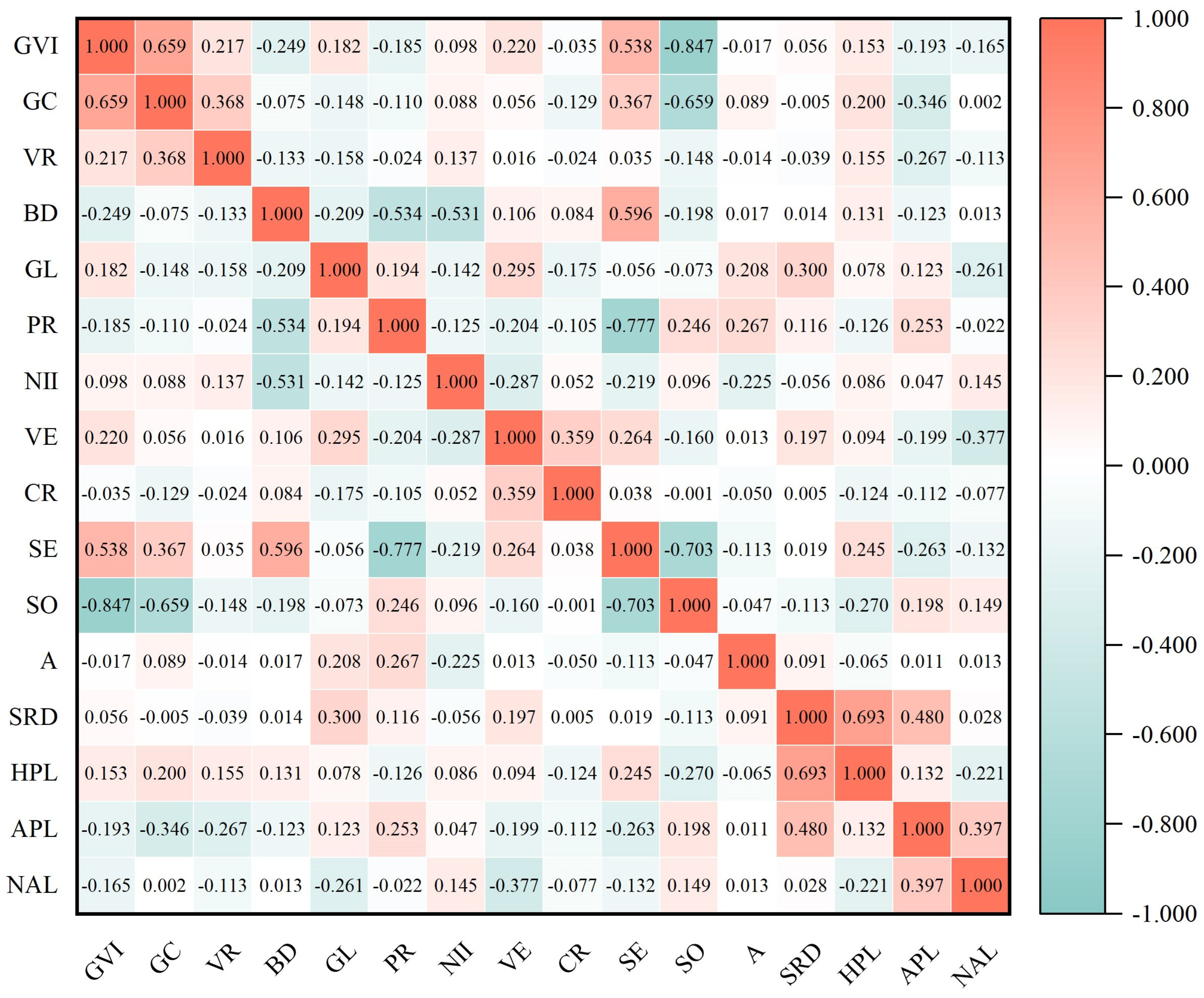


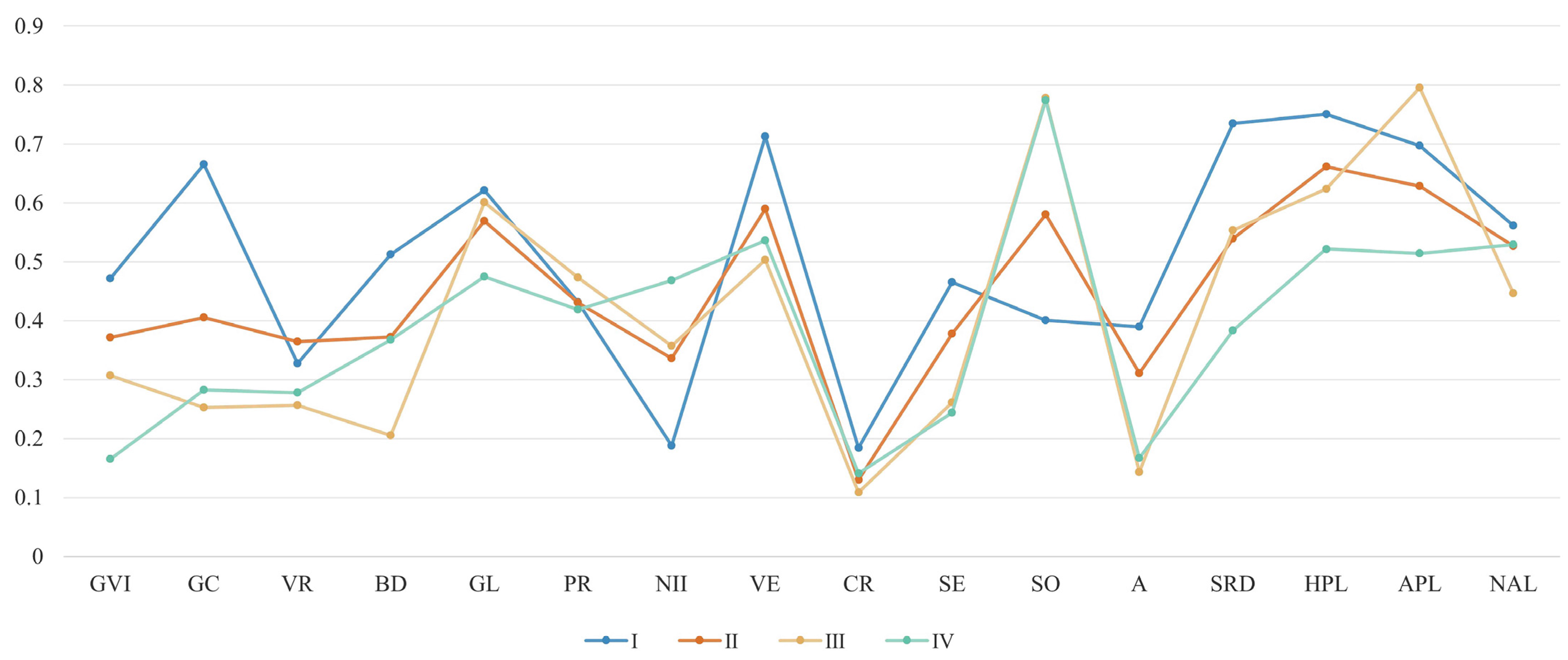
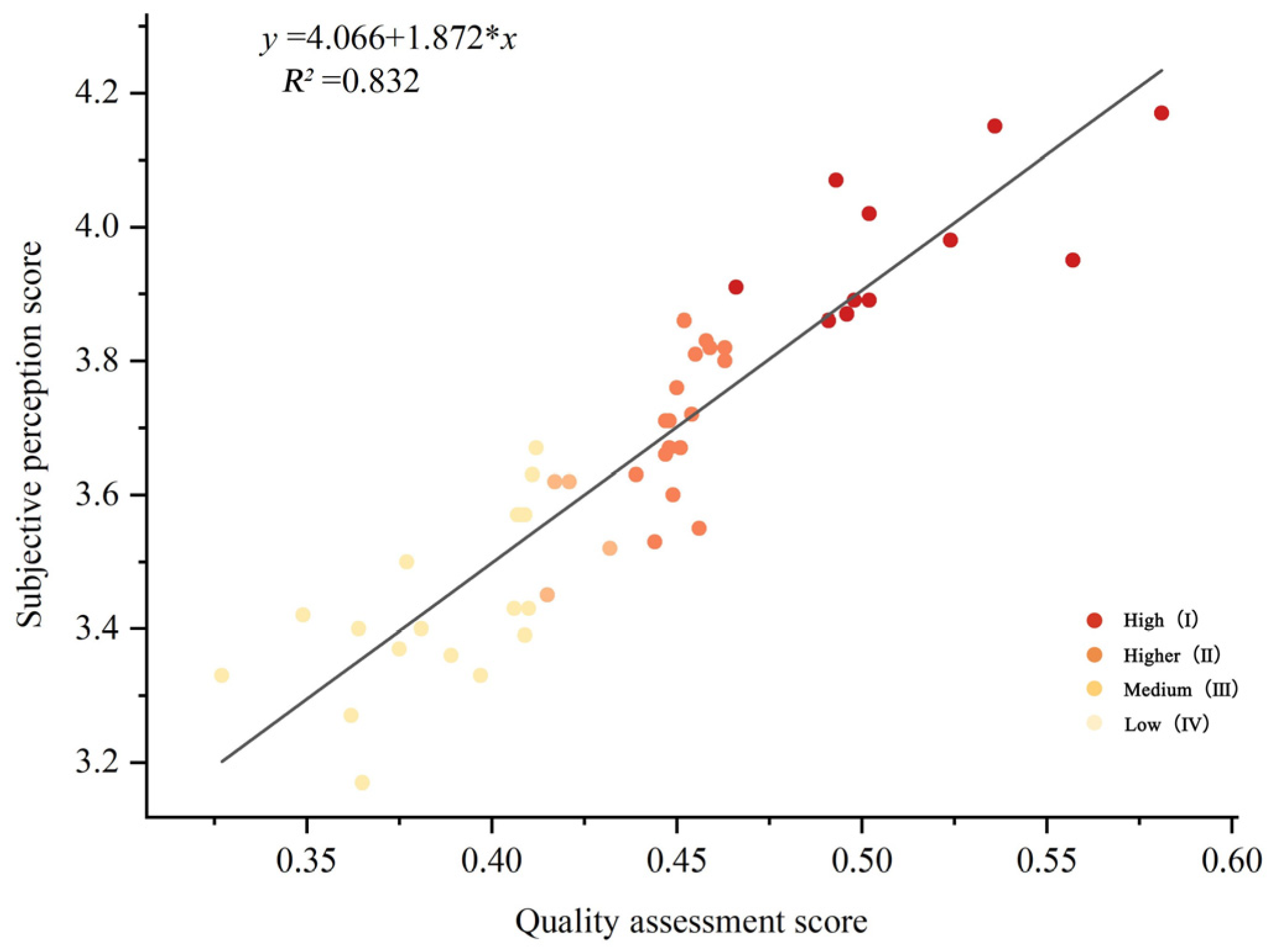

| No. | Type | Area (m2) | No. | Type | Area (m2) |
|---|---|---|---|---|---|
| 1 | Living public space | 173 | 26 | Living public space | 83 |
| 2 | Living public space | 65 | 27 | Faith-based public space | 46 |
| 3 | Living public space | 32 | 28 | Living public space | 67 |
| 4 | Faith-based public space | 85 | 29 | Living public space | 29 |
| 5 | Living public space | 35 | 30 | Living public space | 302 |
| 6 | Living public space | 243 | 31 | Living public space | 59 |
| 7 | Recreational public space | 761 | 32 | Living public space | 28 |
| 8 | Living public space | 88 | 33 | Living public space | 528 |
| 9 | Faith-based public space | 73 | 34 | Faith-based public space | 42 |
| 10 | Living public space | 197 | 35 | Living public space | 71 |
| 11 | Living public space | 343 | 36 | Living public space | 59 |
| 12 | Recreational public space | 113 | 37 | Living public space | 56 |
| 13 | Living public space | 125 | 38 | Living public space | 188 |
| 14 | Living public space | 91 | 39 | Productive public space | 567 |
| 15 | Living public space | 83 | 40 | Recreational public space | 818 |
| 16 | Living public space | 71 | 41 | Living public space | 51 |
| 17 | Productive public space | 118 | 42 | Living public space | 168 |
| 18 | Recreational public space | 100 | 43 | Living public space | 37 |
| 19 | Living public space | 321 | 44 | Living public space | 96 |
| 20 | Faith-based public space | 371 | 45 | Recreational public space | 177 |
| 21 | Faith-based public space | 183 | 46 | Productive public space | 263 |
| 22 | Living public space | 182 | 47 | Living public space | 112 |
| 23 | Recreational public space | 383 | 48 | Recreational public space | 1027 |
| 24 | Living public space | 139 | 49 | Living public space | 272 |
| 25 | Productive public space | 68 | 50 | Faith-based public space | 162 |
| Quality | Elements | Indicators | Indicator Description | Quantitative Method |
|---|---|---|---|---|
| Quality of public spaces in traditional villages | Natural elements | Green view index (GVI) | Proportion of green landscape pixels in the image | Semantic segmentation |
| Green coverage (GC) | Ratio of green area to total area | Actual measurement | ||
| Vegetation richness (VR) | Types of plants in the space | Actual measurement | ||
| Artificial elements | Building density (BD) | Proportion of architectural pixels in the image | Semantic segmentation | |
| Ground levelness (GL) | Levelness of the floor in the space | Questionnaire | ||
| Pavement ratio (PR) | Proportion of road pixels in the image | Semantic segmentation | ||
| Negative interference index (NII) | Proportion of pixels in the image that are cars, utility poles, etc. | Semantic segmentation | ||
| Spatial elements | Visual entropy (VE) | Entropy of the image | MATLAB | |
| Color richness (CR) | Color richness as perceived by the naked eye | MATLAB | ||
| Spatial enclosure (SE) | Ratio of building pixels and plant pixels to pavement pixels | Semantic segmentation | ||
| Sky openness (SO) | Proportion of sky pixels in the image | Semantic segmentation | ||
| Accessibility (A) | Ease of access to the site | Social network analysis | ||
| Cultural elements | Spatial regional distinctiveness (SRD) | Level of territorial specificity of space | Questionnaire | |
| Heritage preservation level (HPL) | Level of preservation of historical sites in the space | Questionnaire | ||
| Activity participation level (APL) | Level of participation in public events | Questionnaire | ||
| Neighborhood affinity level (NAL) | Level of neighborhood affinity | Questionnaire |
| Evaluation Indicators | Visual Elements | Formula | Formula Number |
|---|---|---|---|
| Green view index (GVI) | Vegetation, mountain | (1) | |
| Building density (BD) | Building | (2) | |
| Pavement ratio (PA) | Road | (3) | |
| Negative interference index (NII) | Car, facility | (4) | |
| Spatial enclosure (SE) | Vegetation, building, road | (5) | |
| Sky openness (SO) | Sky | (6) |
| Closeness (E) | ) | ) | ) | , 1) |
|---|---|---|---|---|
| Quality level of public spaces in traditional villages | Low (IV) | Medium (III) | Higher (II) | High (I) |
| Quality | Elements | Weights | Indicators | Subjective Weights | Objective Weights | Combined Weights |
|---|---|---|---|---|---|---|
| Quality of public spaces in traditional villages A1 | Natural elements B1 | 0.218 | Green view index C1 | 0.076 | 0.079 | 0.095 |
| Green coverage C2 | 0.058 | 0.075 | 0.069 | |||
| Vegetation richness C3 | 0.049 | 0.069 | 0.054 | |||
| Artificial elements B2 | 0.184 | Building density C4 | 0.038 | 0.078 | 0.047 | |
| Ground levelness C5 | 0.058 | 0.037 | 0.035 | |||
| Pavement ratio C6 | 0.061 | 0.055 | 0.054 | |||
| Negative interference index C7 | 0.065 | 0.046 | 0.048 | |||
| Spatial elements B3 | 0.347 | Visual entropy C8 | 0.043 | 0.042 | 0.028 | |
| Color richness C9 | 0.065 | 0.096 | 0.099 | |||
| Spatial enclosure C10 | 0.045 | 0.063 | 0.045 | |||
| Sky openness C11 | 0.052 | 0.052 | 0.043 | |||
| Accessibility C12 | 0.098 | 0.085 | 0.132 | |||
| Cultural elements B4 | 0.251 | Spatial regional distinctiveness C13 | 0.053 | 0.066 | 0.056 | |
| Heritage preservation level C14 | 0.055 | 0.063 | 0.055 | |||
| Activity participation level C15 | 0.106 | 0.050 | 0.085 | |||
| Neighborhood affinity level C16 | 0.079 | 0.044 | 0.056 |
Disclaimer/Publisher’s Note: The statements, opinions and data contained in all publications are solely those of the individual author(s) and contributor(s) and not of MDPI and/or the editor(s). MDPI and/or the editor(s) disclaim responsibility for any injury to people or property resulting from any ideas, methods, instructions or products referred to in the content. |
© 2024 by the authors. Licensee MDPI, Basel, Switzerland. This article is an open access article distributed under the terms and conditions of the Creative Commons Attribution (CC BY) license (https://creativecommons.org/licenses/by/4.0/).
Share and Cite
Meng, S.; Liu, C.; Zeng, Y.; Xu, R.; Zhang, C.; Chen, Y.; Wang, K.; Zhang, Y. Quality Evaluation of Public Spaces in Traditional Villages: A Study Using Deep Learning and Panoramic Images. Land 2024, 13, 1584. https://doi.org/10.3390/land13101584
Meng S, Liu C, Zeng Y, Xu R, Zhang C, Chen Y, Wang K, Zhang Y. Quality Evaluation of Public Spaces in Traditional Villages: A Study Using Deep Learning and Panoramic Images. Land. 2024; 13(10):1584. https://doi.org/10.3390/land13101584
Chicago/Turabian StyleMeng, Shiyu, Chenhui Liu, Yuxi Zeng, Rongfang Xu, Chaoyu Zhang, Yuke Chen, Kechen Wang, and Yunlu Zhang. 2024. "Quality Evaluation of Public Spaces in Traditional Villages: A Study Using Deep Learning and Panoramic Images" Land 13, no. 10: 1584. https://doi.org/10.3390/land13101584





